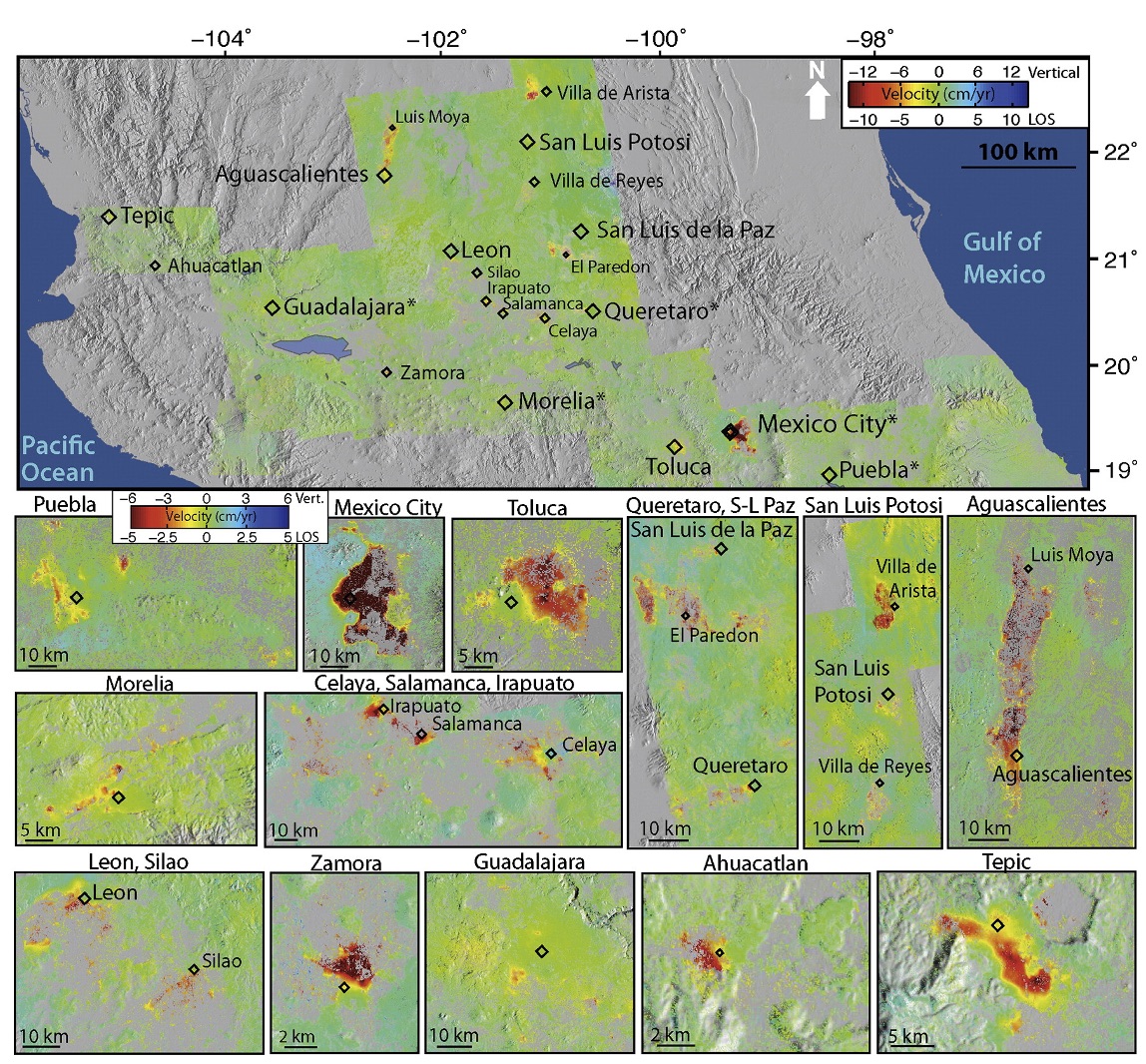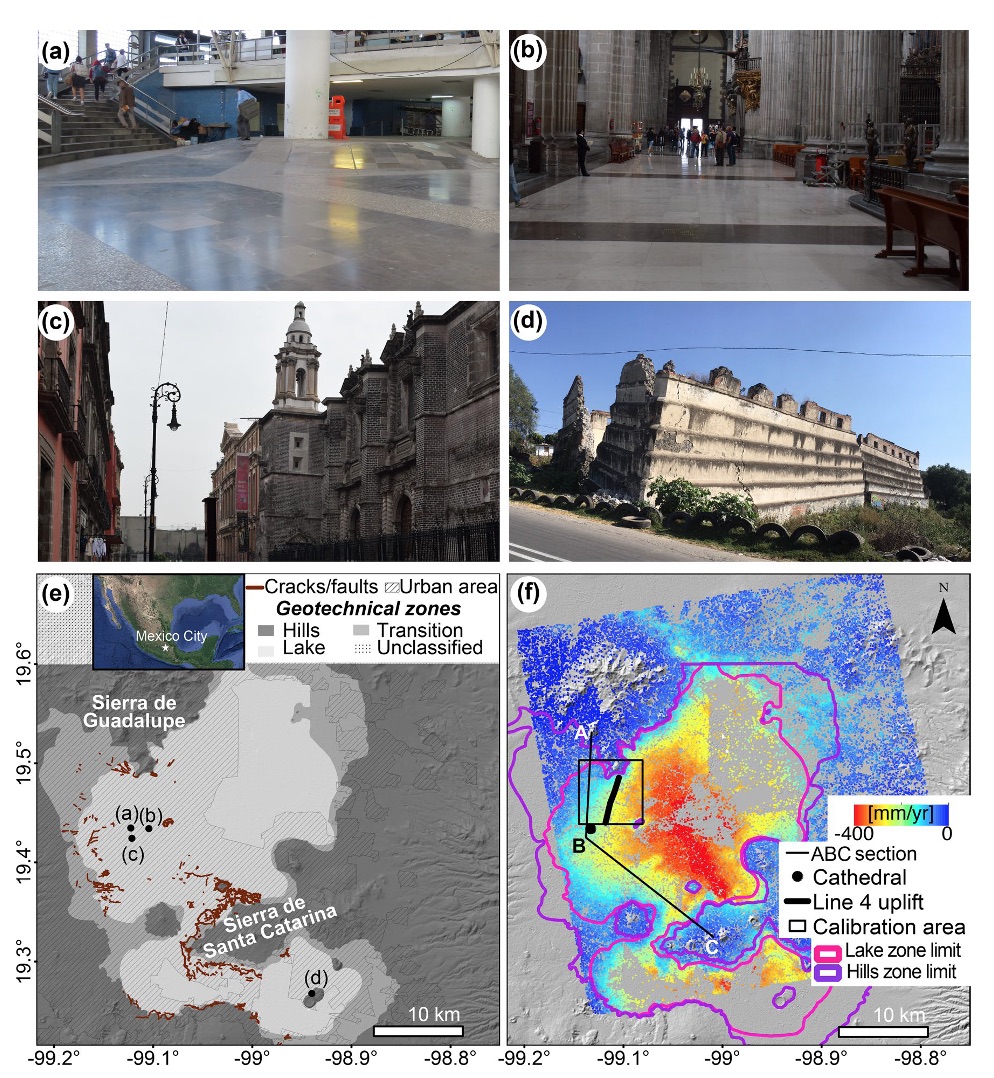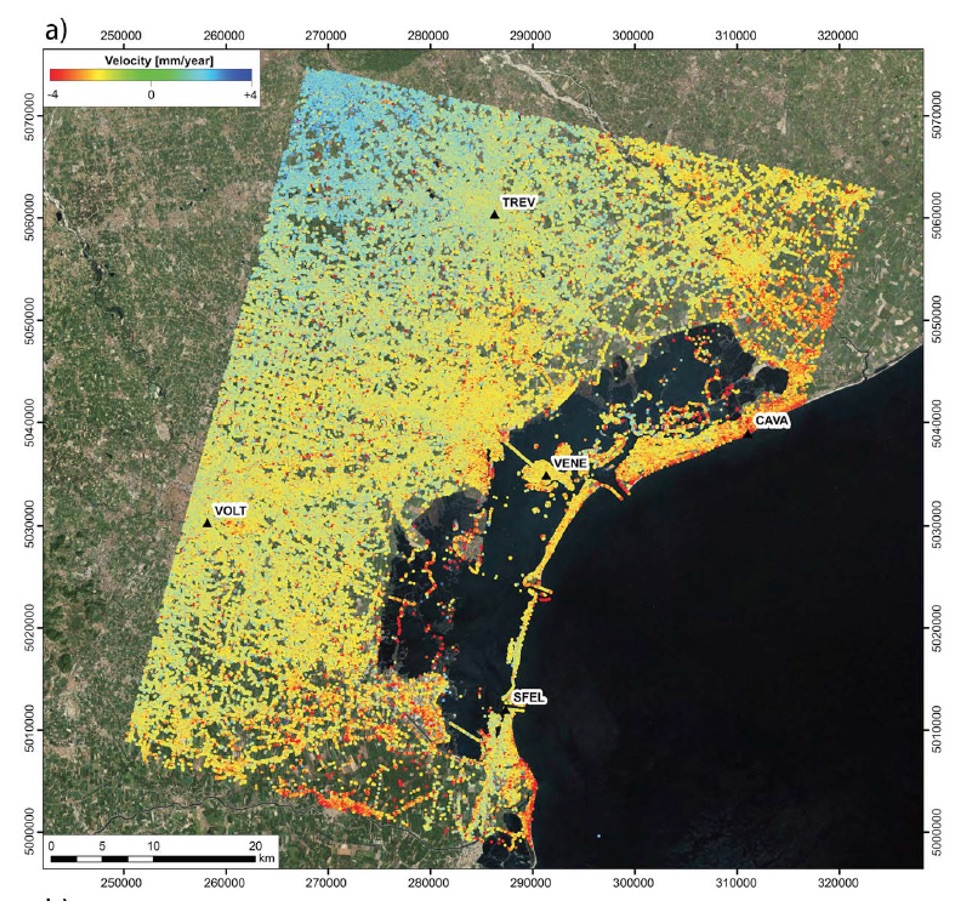Land subsidence research
Land subsidence is a gradual loss of surface elevation, which occurs in response to both natural and anthropogenic processes. Natural causes for land subsidence include sediment compaction, which typically occurs in delta or drained lake environments, delayed response to the melting of late Pleistocene ice sheets (GIA), and response to cavity growth in the subsurface (sinkhole). Anthropogenic causes for subsidence include withdrawal of fluids in the subsurface (groundwater, petroleum, geothermal); wetland drainage, which exposes surface peat or organic soil to oxidation, and subterranean mining. The slow rate of land subsidence (<40 cm/yr) does not pose a threat to human life, except when subsidence occurs prior to sinkhole of mine collapse. Nevertheless, the accumulated effect of land subsidence can be hazardous in low-lying coastal areas, urban areas, and along transportation corridors.
My land subsidence research has focused on monitoring surface changes induced by subsidence using mainly InSAR time series observations, but also by precise GPS monitoring. I have studies extensively land subsidence in central Mexico, which has occurred in many urban areas including Mexico City and 16 other cities in Mexico (Chaussard et al. 2014; Osmanoğlu et al. 2011; Pacheco-Martínez et al., 2015; Solano-Rojas et al., 2020) (Figures 1). The subsidence occurs in response to an increased rate of groundwater withdrawal due to population growth and increased water demand in many urban areas. High subsidence rates (>10 cm/yr) accumulated over decades can cause significant damage to buildings and infrastructure. One such example is Mexico City, home to about 21 million residents, which is built on unconsolidated lake sediments and subjected to subsidence rates of up to 36 cm/yr (Chaussard et al., 2014; Osmanoğlu et al. 2011; Solano-Rojas et al., 2020). Differential subsidence in Mexico City has caused structural damage to historical buildings, such as the main Cathedral, residential buildings, as well as to roads and the Metro system (Figure 2). I also have studied land subsidence in costal settings in Venice (Bock et al., 2012 – Figure 3), New Orleans (Dixon et al., 2006), Miami Beach and Norfolk (Fiaschi and Wdowinski, 2020; Wdowinski et al., 2020). Monitoring coastal subsidence is important for improved coastal hazard assessments as land subsidence can have an important contribution to local relative sea level rise.
Figure 1. Averaged 2007–2011 LOS velocity map of central Mexico derived from ALOS InSAR time-series analysis, overlaying SRTMV4 shaded topography. The color scale shows red colors as negative LOS velocities (subsidence) and blue colors as positive LOS velocities (uplift). Vertical subsidence rates converted from the LOS rates are labeled on the color scale. The emplacement of the 21 subsiding locations are shown by black diamonds and labeled for reference; cities included in the UNESCO World Heritage list are marked by an asterisk. [Source: Chaussard et al., 2014].
Figure 2. Mexico City’s geotechnical and subsidence context. (a–d) Examples of infrastructure subjected to differential displacements (locations in e). (a) Over-compensated column supporting Metro railways causing apparent uplift inside a Metro station (note the uneven floor). (b) Tilted floor inside the Metropolitan Cathedral. (c) Tilted tower of Santa Teresa la Antigua Alternative Art Center in UNESCOS’s world heritage site of Mexico City’s downtown. (d) Dislocated and displaced portion of ex-Hacienda de Xico’s barn. (e) Geotechnical zones and locations of subsidence-related cracks/faults. Inset map shows the location of Mexico City in central Mexico. (f) InSAR-derived vertical velocities calculated from 21 X-band COSMO-SkyMed SAR scenes. [Source Solano-Rojas et al., 2020].
Figure 3: Land subsidence (in mm/yr) along the Venice Lagoon as detected from combined GPS and InSAR observations. [Source: Bock et al., 2012].
Land subsidence publications:
Bear et al. (2002);
Dixon et al. (2006);
Kim et al. (2010);
Plattner et al. (2010);
Osmanoğlu et al. (2011);
Bock et al. (2012);
Cigna et al. (2012);
Chaussard et al. (2014);
Pacheco-Martínez et al. (2015);
Fiaschi and Wdowinski et al. (2020);
Solano-Rojas et al. (2020;
Orhan et al. (2021); 

